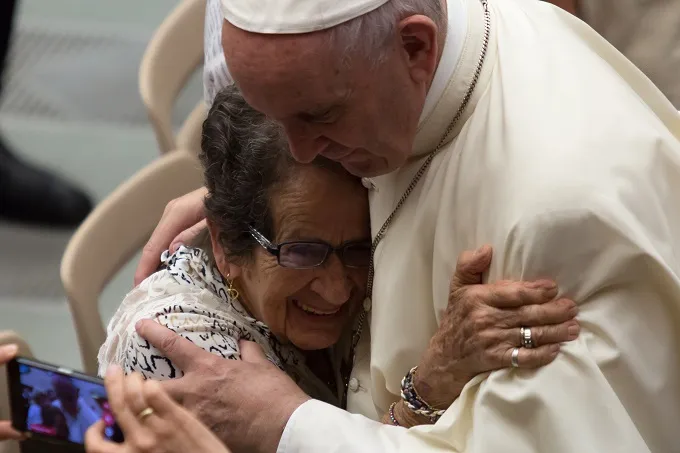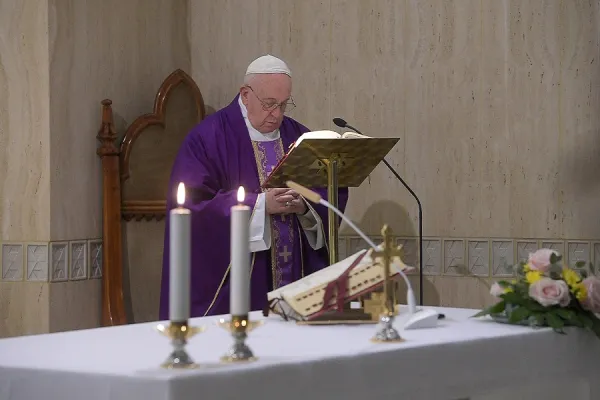
Vatican City, Oct 28, 2024 / 12:55 pm (CNA).
Ahead of the 2025 Jubilee, the Vatican has launched a cartoon mascot unveiled Monday as the cheerful face of the Catholic Church’s upcoming holy year.
The mascot, named Luce — which means “light” in Italian — is intended to engage a younger audience and guide visitors through the holy year.
Archbishop Rino Fisichella, the Vatican’s chief organizer for the jubilee, described the mascot as part of the Vatican’s goal to engage with “the pop culture so beloved by our young people.”
The mascot will debut this week at the Lucca Comics and Games, Italy’s celebrated convention for all things comics, video games, and fantasy, where the Vatican’s Dicastery for Evangelization will host a space dedicated to “Luce and Friends.”
It will be the first time that a Vatican dicastery participates in a comics convention. Fisichella, who serves as the the pro-prefect of the Dicastery for Evangelization’s section for the new evangelization, said he hopes taking part in the convention “will allow us to speak to younger generations about the theme of hope, which is more central than ever in the evangelical message.”
Clad in a yellow raincoat, mud-stained boots, and a pilgrim’s cross, Luce’s mission is to guide young pilgrims toward hope and faith with her trusty dog Santino at her side. Shells glimmer in her eyes, recalling the scallop shell of the Camino de Santiago, an emblem of the pilgrimage journey.
Speaking at a Vatican press conference on Oct. 28 next to a plastic figurine of Luce, Fisichella described Luce’s shining eyes as “a symbol of the hope of the heart.”
Luce, he said, will also be the face of the Holy See’s pavilion at Expo 2025 in Osaka, Japan, where she will represent the Vatican’s pavilion theme, “Beauty Brings Hope,” alongside Caravaggio’s “The Entombment of Christ,” a painting that will be temporarily on loan from the Vatican Museums for the expo.
Simone Legno, the Italian co-founder of the pop culture brand tokidoki, designed Luce and her “pilgrim friends” — Fe, Xin, and Sky, each outfitted in brightly colored jackets.

Luce’s yellow sailor’s raincoat is a nod to both the Vatican flag and to journeying through life’s storms. The mascot’s muddy boots represent a long and difficult journey, while her staff symbolizes the pilgrimage toward eternity.
Legno, who admitted a lifelong love for Japanese pop culture, said he hopes that “Luce can represent the sentiments that resonate in the hearts of the younger generations.”
“I am extremely grateful to the Dicastery for Evangelization for opening its doors to pop culture as well,” he said.
A jubilee is a special holy year of grace and pilgrimage in the Catholic Church. It typically takes place once every 25 years, though the pope can call for extraordinary jubilee years more often, such as in the case of the 2016 Year of Mercy or the 2013 Year of Faith.
The Vatican has planned a range of cultural events to accompany the lead-up to the jubilee year, including a concert on Nov. 3 of Shostakovich’s “Symphony No. 5” and an art exhibit of Marc Chagall’s “White Crucifixion” painting, which will be on loan from the Art Institute of Chicago to be displayed in Rome’s Museo del Corso from Nov. 27 to Jan. 27.
The jubilee year itself will begin with the opening of the Holy Door of St. Peter’s Basilica on Christmas Eve 2024, welcoming an anticipated 30 million pilgrims into Rome by the time the Holy Year ends on Jan. 6, 2026.
If you value the news and views Catholic World Report provides, please consider donating to support our efforts. Your contribution will help us continue to make CWR available to all readers worldwide for free, without a subscription. Thank you for your generosity!
Click here for more information on donating to CWR. Click here to sign up for our newsletter.






And the pop culture dismisses exquisite Gothic stained glass windows as from the Dark Ages. Very backwardist.
This Vatican’s juvenility has not already been clear??!! What next?! Diapers, bottle feedings, and teething rings, apparently.
Rupnik’s “Three eyes” are out then?
My first thought was that perhaps Fr. Rupnik found a side gig here. His “art” always reminded me of creepy anime.
Well, that’s one thing the tokidokis have going for them: no Rupnik-inspired imagery. No fused “third eyes,” no uncomfortably close embraces between Jesus Christ and the Virgin Mary, no weasel-like images of the saints, etc.
Oh please! Wake up! Just wake up!
You should google “simone legno toki doki”, or just go to
https://www.tokidoki.it/collections/pride
to see what you can’t/wan’t to see.
Or you can go for once to people who do real research about important things:
https://www.barnhardt.biz/2024/10/28/mascot-of-2025-jubilee-is-a-blue-haired-androgyne-wearing-a-sodomy-pride-rainbow-rosary-as-a-necklace-and-carrying-a-witchs-stang-named-luce-is-that-shor/
Isn’t Luce short for Lucifer? Why have a mascot at all? This symbology is demonic and shows the disrespect that Rome shows. Quit catering to the secular world and enough of the rainbow colors. The rosary is our defense against the devil, and now Rome has shown it’s true colors. Please explain the naval anchors while you are at it and why pilgrim’s staff looks like a divining rod.
“Luce” is Italian for “Lucy”. That said, the mascot is … embarrassing.
“Imbeciles Let Loose in Rome” should be the headlines at the Vatican newspaper.
https://www.tokidoki.it/products/tokidoki-tigeroni-sofubi-red?_pos=4&_sid=e228185de&_ss=r
Tokidoki design who produced this absurdity also sell devils, death figurines and unicorns. It’s going to be a Freemasonic Laughter point in lodges around the world that devils, unicorns, succubi, and vatican “little big eyed kids” are all one happy family…
I guess that they threw the “worship no other god” bit along with “no idols” out the window AGES AGO when they started selling Jesus figurines wayyyyy back before the middle ages… so why not market a cartoon doll and have be named after Lucifer, the bringer of knowledge (light)? Not to mention that having a box of these things in your popemobile will surely lure in more kiddies that you can abuse!
But, all of that aside, if you will, it looks like a cheap tchotchke your bank would hand out to your kid if you opened an account with them. Yuck.
Kinda amusing, but hokey. As Mr Olson above said, it’s embarrassing.
For Jubilee Year 2025, the mascot (if it’s even really needed??) the Vatican should have opted for something more serious, like maybe an icon of the 325AD Nicean Council, or maybe emphasize the importance of the Nicene-Constantinopolitan Creed which celebrates its 1700th anniversary next year.
How backwardist can you get?
After all, at the Synod on Youth the pope exchanged his crozier for a Wiccan Stang. Great photo op of y’all come “welcoming,” or whatever.
In the case of “Luce,” my bet is that those approving the mascot design are not deliberate, but just somnambulist and innocently gullible as hell, speaking theologically.
Wrote this comment on the 28th but thought it too negative, lacking sensitivity. Now that the outrage of a multitude has been expressed I feel emboldened to join the outcry of the more noble.
Forgive me. But her staff is forked like a witch’s stang. And her strangely lit eyes are Halloweenish spooky. Is this cartoon a product of the Rupnik legacy? Can the Vatican no longer produce decent art? An effigy of Luce on your front lawn would scare the kids away.